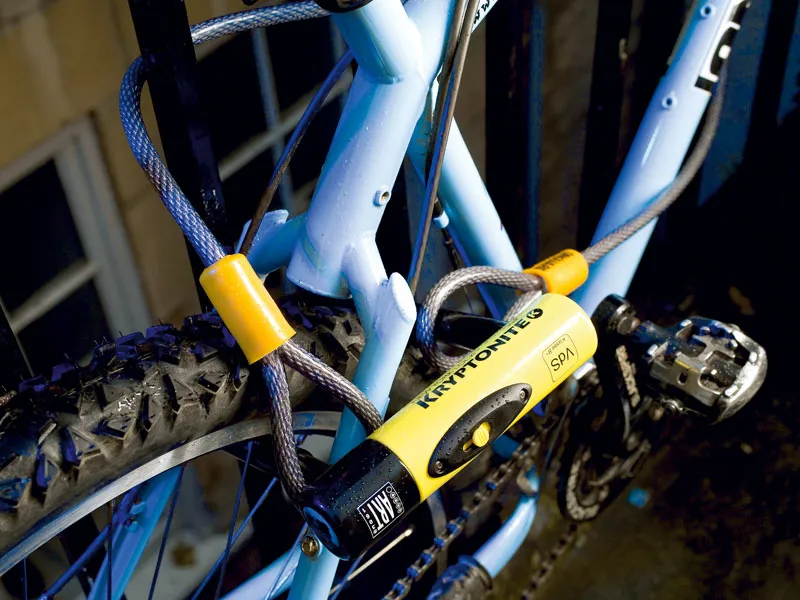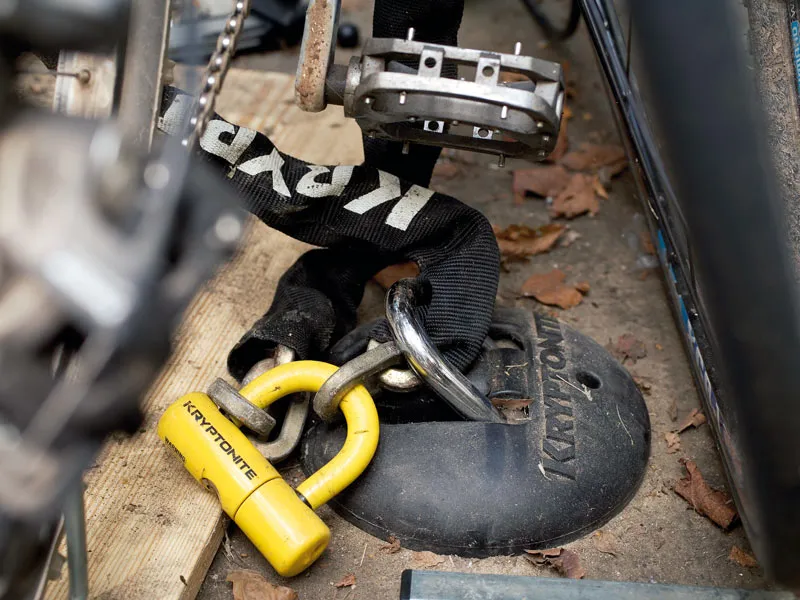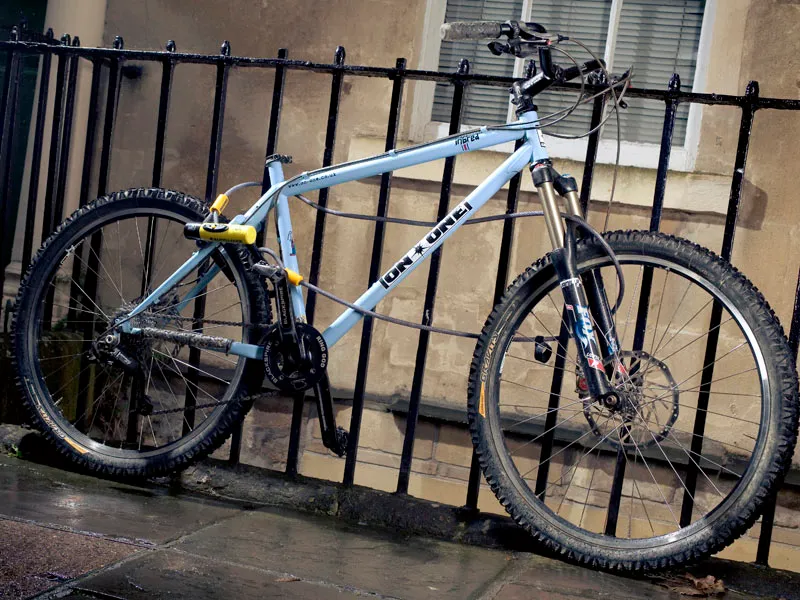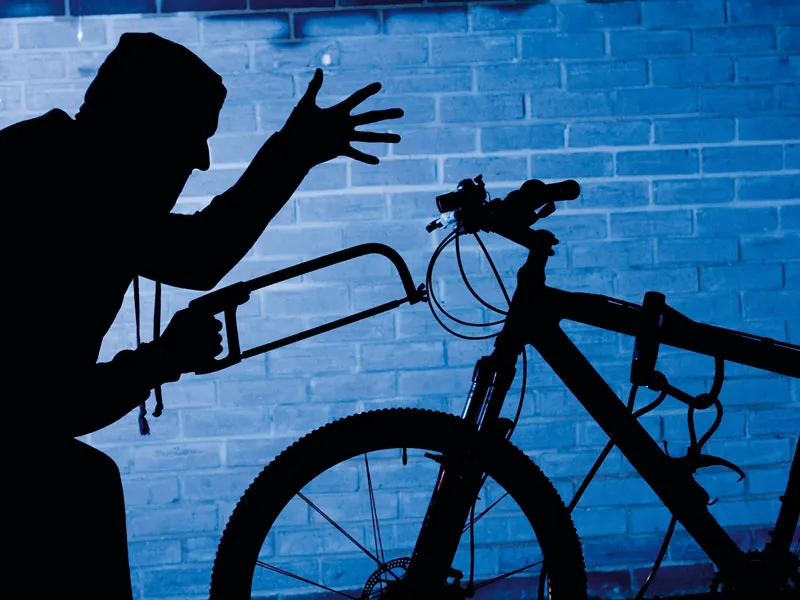There’s very little you can do to recover your bike if the worst should happen and a thieving git makes off with it. But protecting yourself from being a victim in the first place – and minimising its impact on your life if it does happen – is the best way to keep the thieves at bay. From the ins and outs of bicycle insurance to the best ways to lock and secure your bike, we show you exactly how to do just that. So wise up…
Deals on wheels
What to look for when choosing the right insurance for your bike...
If you’ve forked out several thousand of your hard-earned pounds on a bike, then the worst thing that could happen is for it to get stolen and for you to see your money drain away as quickly as the blood in your face. It might not be as glamorous a spending session as jetting off to ride in Moab, but bike insurance will give you total piece of mind should the worst happen.
The whole insurance world can be quite confusing, but there are key points – beyond the cost of the premium itself – that you should consider when choosing the right policy for you.

Many insurance companies replace stolen bikes with ‘new for old’ for cycles up to three years from new. After three years there’s commonly an annual depreciation of 10% for wear and tear. This can be a little infuriating if your bike is over three years old but cost you something like £2,000 new, as if it got stolen after five years you’d only be able to claim for £1,600. But with the trickle down of technology, a £1,600 bike should – on paper at least – be a better bike than your original £2,000 beauty. Some insurers simply insure you for the sum insured and that doesn’t change.
If you never ride an organised event of any sort then you’ll only need to insure your bike for leisure and recreation use. If, however, you race or take part in an event of any kind then you’ll need to make sure that you take out a race/competitive events cover, as otherwise your insurance against accidental damage would be void.
Another increasingly important factor to consider is whether or not you’ll be taking your bike overseas. Even the standard UK domestic cover normally includes a period of insurance for travel to Western European countries of around 30 days a year (but this does vary and some policies don’t offer any), so if you’re not going to be away for more than that, then you won’t need a specifically tailored European premium. There are also worldwide cover options available, too.

You should also ensure that your bike locks and the way in which you keep your bikes locked up at home are in line with your insurer’s criteria. If you don’t have the correct lock then you won’t be able to blag it – if you do make a claim, the insurer will require the proof of purchase of an approved lock, its keys, or the remains of the lock itself. If you didn’t have or use an approved lock, then they won’t honour your claim. Some insurers also insist that your home security measures are up to scratch. If you keep your bike in the garage or garden shed, the door and any windows should be secured with approved locks (British Standard BS3621), and the bike itself locked securely to an immovable object inside – usually a secure ground anchor. Likewise, if the bike is kept in the house, then some insurers insist that the house’s security meets their specifications, with the correct locks on all doors and windows, and with alarms throughout, too.
The bottom line is that there’s no one best insurance provider – it depends on what you need. Many insurers are flexible and can tailor their policies to best suit your needs, so always ask and double-check the conditions before signing on the dotted line.
Lock it down
The ins and outs of using a lock properly to defeat the thieves
The only person responsible for stopping a piece of thieving scum slithering off with your bike is you, so don’t make it easy on them – anywhere or any time. The best way to do that is to use your common sense and never leave it unattended, even for a second. And always use a lock – preferably a damn good one, but even a bad lock is better than no lock at all, and if you’ve no lock, then either take the bike with you or don’t leave it unattended. If a bike presents anything more than a casual challenge they’re likely to pass it up. On average, thieves will give up on stealing a bike if they can’t get through the locks within three minutes.
Out and about

- Never lock the bike to anything that is less flimsy than the lock itself (a wooden fence or a tree, for example).
- Make the lock mechanism difficult to get to – if it’s a pain in the ass for you to get to in order to unlock it with the key, then it’s going to be worse for the thief.
- Always ensure that you fill the lock up with as much of the bike, wheels and the immoveable object as possible: if there’s no space for a thief to get a lever through the shackle, then their primary form of attack is redundant. The same is true of any cables or chains.
- Never lock your bike up somewhere quiet and out of the way, as you’re allowing the thief to take their time with breaking your locks totally undisturbed.
At home
- Always secure your bike to an immoveable object – a strong ground anchor in a solid floor is best.
- Position the ground anchor so that it’s as difficult as possible to get to – either in a corner, at the foot of the wall, or shrouded by the bikes themselves.
- Use a combination of heavy duty chains and D-locks (passed through the bike’s frame) to secure the bike to the ground anchor.
- Use different locks from different manufacturers to make a thief’s job that little bit harder.
- Use cables, passed through the major locks, to secure the wheels and other accessories.
- Take up any slack in any of the locks and fill the shackles as completely as you can.
- It sounds obvious, but never leave any tools that may help the thief in their work in the same place as the bikes themselves.
In the car
- If you leave the car en route and the bikes are on a back rack or roof rack, ensure that they are locked together, to the rack, and that the whole unit is locked to the car.
- If you’re storing your bikes inside your motor, it’s still a good idea to lock them together and cover them up.
- Bikes left in or on cars overnight – or between certain hours – will almost certainly invalidate your insurance for that period. Check the small print of your insurance documents.
At events
- Events are obviously candy shops for thieves. Be extra vigilant about where you leave your bike and don’t leave it unlocked, unwatched or unattended at any time.
- Overnight, if there’s nowhere to lock it inside a secure building, either lock it in your car and cover it up, or lock all your riding buddies’ bikes together and secure them as best you can (a solid toe hitch is a good makeshift ground anchor) close to where you are sleeping.
